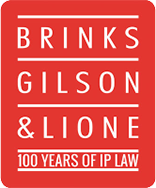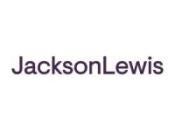Despite the fact that virtual patent marking was introduced nearly a decade ago, jurisprudence addressing virtual marking issues has been quite limited. Recent guidance from U.S. district courts, however, paints a clearer picture of the patent marking statute's requirements to (a) associate the patented article with the number of the patent; (b) place either "patent" or "pat." together with a website address on the product; and (c) ensure the marking is “substantially consistent and continuous."
Since 1952, the patent marking statute ("Marking Statute") has encouraged patentees to give public notice of a patented article through physical application of the patent number to the article, which assists the public and helps mitigate innocent infringement. 35 U.S.C. § 287; Nike, Inc. v. Wal-Mart Stores, Inc., 138 F.3d 1437, 1443 (Fed. Cir. 1998). Giving effect to this goal, the marking statute provides a financial disincentive for patent owners who do not mark their products (i.e., a patentee is precluded from recovering damages for infringement of unmarked articles prior to notice of infringement). Once marked, a patent owner’s marking must be “substantially consistent and continuous.” Id. at 1446.
Since the AIA's passage in 2011, however, patentees have been able to inform the public that an article is patented through "virtual marking" (i.e., use of the word “patent” or the abbreviation “pat.” together with the URL of a website address where the actual patent number may be found). 35 U.S.C. § 287. As opposed to physically marking a patent number on a product, virtual marking allows a patent owner to quickly update its patent data website page without the costs of modifying product tooling or packaging (e.g., for newly issued, expired, or invalidated patents). In relevant part, the Marking Statute provides:
"Patentees . . . may give notice to the public that the same is patented . . . by fixing thereon the word 'patent' or the abbreviation 'pat' together with an address of a posting on the Internet, . . . that associates the patented article with the number of the patent." 35 U.S.C. § 287(a) (emphasis added).
The Delaware District Court recently clarified what does, and does not, constitute adequate association, concluding that a "website itself must do more than simply list the patentee's patents." Mfg. Res. Int'l v. Civiq Smartscapes, LLC, Case No. 17-269, 2019 U.S. Dist. LEXIS 146060, at *3 (D. Del. Aug. 28, 2019)(emphasis added). Citing the statute's "plain language,” the court reasoned that "[s]imply listing all patents that could possibly apply to a product or all patents owned by the patentee" "merely creates a research project for the public," as opposed to giving public notice. Id. at *30-31. The court described why this would be the case by pointing to two examples lacking the association necessary "as a matter of law to meet the requirements of virtual marking":
Id.
The Court concluded that Plaintiff's examples did "nothing to 'associate' any specific product it has marked with the patents which cover it." Id. at 31. The Court was not persuaded by Plaintiff's arguments that proper association was met in view of (1) Plaintiff's statement that "[o]ne or more of the above listed MRI patents may be used by LG-MRI products under license from MRI, Inc.", and (2) Plaintiff's clarification of "the patent category (LCD Display Patents)". Id. Accordingly, Plaintiff's website failed to "provide ‘a ready means of discerning the status of the intellectual property embodied in an article of manufacture or design," and no damages were awarded for infringement that occurred prior to the notice that was provided by the filing of the suit. Id., citing Bonito Boats, Inc. v. Thunder Craft Boats, Inc., 489 U.S. 141, 162 (1989).
Beyond the association requirement, courts also have found that a website address lacking the words “patent” or “pat.” does not provide constructive notice, A to Z Machining Serv., LLC v. Nat'l Storm Shelter, LLC, 2011 U.S. Dist. LEXIS 149387 (W.D. Okla. 2011), and that evidence supporting consistent marking of substantially all products may include (a) documentary evidence concerning the timeframe in which the website has operated; (b) engineering and assembly drawings or the actual product depicting virtual mark placement; and (c) testamentary evidence concerning the frequency of the virtual mark's use on products. See Asia Vital Components Co. v. Asetek Danmark A/S, 377 F. Supp. 3d 990, 1024-25 (N.D. Cal. 2019), citing SEB S.A. v. Montgomery Ward & Co., 594 F.3d 1360, 1378 (Fed. Cir. 2010).
Notably, the burden remains on the patentee to demonstrate that its patent marking practices are effective and appropriate. In view of recent court guidance, consider the following points for creating an effective virtual marking strategy:
-
Include either "pat." or "patent" together with the website address where the actual patent number may be found.
-
Place the patent owner’s website address on all patented products and clearly correlate each product that is covered by at least one claim of a specific patent on that website address for a patented product.
-
Periodically review the patent website page to ensure that it is current, accurate, and complete (e.g. reflecting new products; updating issued, expired, or invalidated patents).
-
Create and preserve records that demonstrate that the virtual marking was consistent and continuous. This may entail keeping a written log of updates to the patent website address, and preserving evidence that it was continually maintained





 />i
/>i


